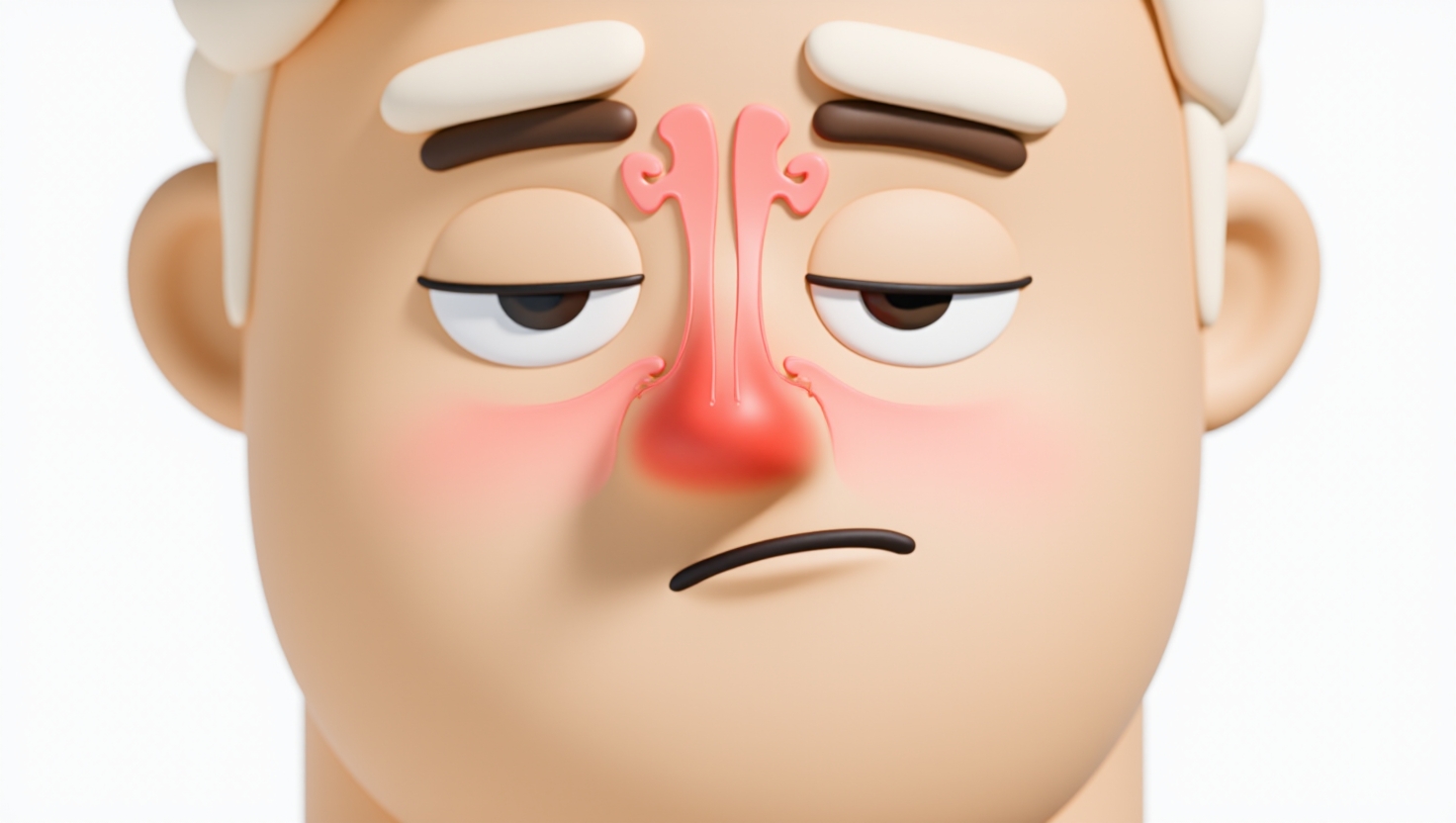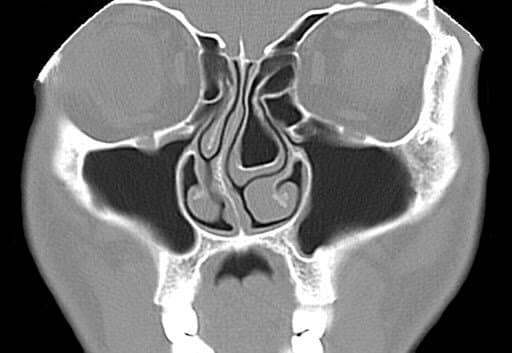Seasonal Sinus Pain Triggers: Causes and Relief Tips
Sinus pain and congestion that appear or worsen with changes in the weather or during specific times of the year can be incredibly frustrating. For millions of people, these recurring issues are signs of seasonal sinus pain triggers at work. Understanding what sets off your sinus discomfort as the seasons change is a crucial first step toward finding real relief and preventing frequent flare-ups. In this detailed guide, we’ll explore common causes, how to identify your personal triggers, and practical strategies to keep your sinuses healthy and comfortable all year long.
What is Seasonal Sinus Pain?
Seasonal sinus pain refers to inflammation, pressure, congestion, or discomfort in the sinus cavities that tends to arise or worsen during particular times of the year. This pain usually links to environmental changes such as pollen surges, shifts in humidity, temperature drops, or an increase in airborne irritants. These factors cause the delicate lining of your sinuses to swell and produce mucus, leading to symptoms like facial pressure, headaches, nasal stuffiness, and sometimes even tooth pain.
Imagine your sinuses as a series of small tunnels that can become easily blocked when irritated—similar to a traffic jam occurring when a normally clear highway suddenly gets clogged. Recognizing your unique sinus pain triggers can empower you to manage symptoms more effectively and even prevent chronic problems. Throughout this blog, we’ll guide you through common seasonal causes, ways to recognize your symptom patterns, practical tips to ease discomfort, and protective measures for year-round sinus health.
Identifying your triggers is the first step toward clearer breathing and lasting sinus relief.
What Causes Seasonal Sinus Pain?
How Seasonal Changes Affect Your Sinuses
Each season brings environmental challenges that can negatively impact your sinuses. When triggers like pollen, dry air, or mold spores irritate the sensitive mucous membranes lining your sinus passages, swelling and mucus production tend to increase. This leads to congestion, facial pressure, and sometimes infections. Let’s explore the most common seasonal sinus pain triggers and how they affect you.
Spring Allergens: Pollen and Its Impact
Spring is often difficult for those prone to sinus issues due to high pollen counts released by blooming trees, grasses, and plants. When you inhale pollen, your immune system may misidentify it as a harmful intruder. In response, your body releases chemicals causing inflammation inside your nasal and sinus passages. This leads to typical allergy symptoms like congestion, increased mucus or post-nasal drip, headaches, and facial pain. For example, studies show pollen counts can exceed 1,000 grains per cubic meter of air during peak spring days, overwhelming sensitive sinuses. For further information, see What Are Allergies?.
Spring pollen is a powerful trigger that can significantly worsen sinus discomfort.
Summer Heat and Humidity Effects
Summer’s hot, humid conditions encourage mold spore growth both outdoors and indoors, especially in poorly ventilated or damp areas. Heat combined with humidity can cause the delicate tissues lining your nasal passages to swell, narrowing sinus openings and worsening congestion. For those prone to sinus infections or allergies, this may mean more frequent flare-ups. Think of it as a greenhouse effect inside your sinuses—warm, moist conditions provide the perfect environment for irritants to thrive.
Managing humidity levels is key to reducing summer sinus issues.
Fall Triggers: Ragweed and Mold Exposure
As temperatures cool and leaves fall, ragweed pollen reaches its seasonal peak, contributing significantly to sinus irritation. About 75% of people allergic to pollen react to ragweed, one of the most common fall allergens. Simultaneously, decaying leaves and damp conditions raise mold spore counts—another frequent cause of sinus inflammation. Both ragweed and mold spores can trigger nasal congestion, facial pressure, and sinus pain. For practical fall allergy advice, read our Ragweed & Mold Management Guide.
Fall exposes your sinuses to seasonal allergens that require vigilant management.
Winter Challenges: Cold, Dry Air and Sinus Problems
Winter brings cold, dry air that tends to sap moisture from your nasal passages. Spending more time indoors with heaters running further dries out delicate sinus membranes, resulting in irritation and discomfort. Without proper humidity, sinuses can dry out and become prone to pain or infection. Using a humidifier adds moisture to the air, which helps prevent dry sinuses and reduces the likelihood of sinus infections in some individuals, especially in dry environments. However, humidifiers must be kept clean to avoid mold growth that can worsen sinus problems. Learn more at Why Humidifiers Help ENT Conditions.
Maintaining balanced indoor humidity is vital during winter months.
Respiratory Infections as Seasonal Sinus Pain Triggers
Respiratory infections, including colds, the flu, and other viral illnesses, become more common in colder months. These infections inflame and block the sinus cavities, often leading directly to sinus pain. Even a mild cold can cause sinus tissues to swell and block drainage channels, triggering or worsening sinus discomfort.
Protecting yourself from infections can significantly reduce seasonal sinus pain.
References: Columbia Breathe Free, ENTcet.com, American Sinus Institute, ENT Doctors Los Angeles
How to Recognize Your Sinus Pain Triggers
Not all sinus pain manifests the same way. Understanding your particular triggers can help you take timely action to prevent worsening symptoms.
Common Sinus Pain Symptoms to Watch For
- Facial pressure or pain, especially around the cheeks, eyes, or forehead
- Headaches, often behind the eyes or forehead
- Nasal congestion or persistent stuffy nose
- Post-nasal drip, a sensation of mucus running down the back of your throat
- Pain in upper teeth or jaw, which can sometimes be mistaken for dental issues
For a detailed explanation, visit our Symptoms of Sinus Problems page.
Recognizing symptoms early can help you respond before sinus issues escalate.
Linking Symptoms to Specific Seasonal Factors
Observe when and where your symptoms intensify. Do symptoms peak during spring pollen season? Or worsen on humid summer days or after raking leaves in the fall? Tracking these patterns provides valuable clues. Online tools like the Georgia Pollen Tracker let you compare pollen levels with your symptom diary, helping identify cause and effect.
Correlating symptoms with environmental factors is key to managing sinus pain.
Monitoring Your Environment for Triggers
Keep a simple daily diary noting symptom severity alongside weather conditions, pollen counts, humidity levels, and specific activities like yard work or cleaning. This personalized data reveals the environmental factors irritating your sinuses most. Also, monitor indoor air quality using thermometer-hygrometers or invest in air purifiers with HEPA filters to reduce trigger exposure.
Environmental awareness empowers you to minimize sinus irritation.
Managing Seasonal Sinus Pain: Relief That Works
Seasonal sinus pain can disrupt daily life, but many proven strategies can alleviate symptoms and improve comfort.
Home Remedies to Ease Sinus Discomfort
- Steam Inhalation: Breathing warm, moist air loosens thick mucus and relieves congestion. Lean over a bowl of hot water with a towel over your head for 10-15 minutes.
- Saline Nasal Rinses: Rinsing nasal passages with sterile saline clears allergens and reduces mucosal swelling. Neti pots or saline sprays are easy and effective.
- Warm Compresses: Applying gentle warmth to cheeks and forehead eases sinus pressure and pain.
- Hydration: Drinking plenty of water thins mucus, promotes better sinus drainage, and speeds symptom relief. See Hydration and Sinuses: How Much Water Do You Need.
Simple at-home actions often provide significant sinus relief.
Over-the-Counter Treatments
- Nasal Sprays: Saline sprays maintain moisture and clear irritants, while corticosteroid sprays reduce inflammation effectively, especially during allergy season. Note that corticosteroid sprays usually take several days to reach full effectiveness and should be used as directed.
- Antihistamines: These suppress allergic reactions and help if allergies cause your sinus pain. Use under guidance, as some can cause drowsiness or other side effects.
- Decongestants: These quickly reduce nasal swelling and open sinus passages. However, limit use to no more than three consecutive days to avoid rebound congestion.
For detailed guidance on products and when to see a doctor, visit Best OTC Medicine for Sinus Infection: When to See a Doctor.
Proper use of OTC treatments can significantly improve sinus comfort.
Recognizing When to See a Healthcare Professional
Persistent or severe sinus pain may indicate a sinus infection or other issues needing medical attention. Consult a specialist if you experience:
- Pain lasting more than 10 days without improvement
- High fever or noticeable facial swelling
- Severe headaches or changes in vision
Learn more about warning signs at When Should I See an ENT?.
Timely medical evaluation prevents complications from sinus conditions.
How to Prevent Seasonal Sinus Pain Before It Starts
The best way to manage seasonal sinus pain triggers is to avoid or minimize exposure whenever possible.
Minimize Exposure to Allergens
- Keep windows and doors closed during peak pollen seasons and on windy days.
- Wear N95 or similar masks when mowing, raking, or gardening to reduce inhaling allergens.
- Clean surfaces frequently to reduce indoor dust and mold spores. For tips, see Sinus Friendly Home Cleaning Tips.
Reducing exposure lowers the risk of triggering sinus pain.
Maintain Healthy Indoor Air Quality
- Use air purifiers with HEPA filters to effectively remove airborne allergens. See Best Air Purifiers for Sinus Sufferers for recommendations.
- Vacuum regularly with HEPA-filter vacuums to capture fine allergens.
- Use humidifiers during dry winter months but clean them regularly to prevent mold buildup, which can worsen sinus issues.
Clean, filtered air supports sinus health all year.
Preventive Medications and Allergy Treatments
- Begin allergy medications like antihistamines before your usual symptom onset to prevent flare-ups.
- For persistent or severe allergies, immunotherapy such as allergy drops or shots may provide long-term relief. These treatments should be administered and monitored by an allergy specialist. Explore Allergy Testing and compare Allergy Drops vs Allergy Shots.
Early intervention and specialized treatments can improve your quality of life.
FAQs About Seasonal Sinus Pain
What’s the difference between sinus pain and a sinus infection?
Sinus pain generally results from inflammation or congestion caused by irritants or allergies. A sinus infection (sinusitis) usually involves bacterial or viral pathogens and includes more severe symptoms such as fever and thick, colored nasal discharge.
Can sinus pain cause headaches or tooth pain?
Yes. Sinus pressure often causes headaches, especially behind the eyes or forehead. Inflammation of the maxillary sinuses (near the upper jaw) can also mimic tooth pain, sometimes leading people to seek dental treatment. However, if tooth pain persists, a dental evaluation is recommended to rule out other causes. Learn more at How Sinus Tooth Pain Develops and ENT Treatments That Help.
Are sinus issues more common in certain climates?
Sinus health depends on both humid and dry climates, but issues usually arise based on individual sensitivities and seasonal variations. For a comparison, see Humid vs Dry Climates: Best for Sinus Health.
How can I tell if my sinus pain is allergy-related or an infection?
Allergy-related symptoms follow seasonal patterns and correlate with pollen counts, usually without fever. Persistent or worsening symptoms accompanied by fever, facial swelling, or colored nasal discharge suggest infection.
When is surgery an option for chronic sinus pain?
Surgery, such as balloon sinuplasty, is generally considered only after thorough evaluation by an ENT specialist and when sinus pain becomes chronic and does not improve with conservative treatments. Surgery helps open blocked sinus passages and restore normal drainage. Read more at Balloon Sinuplasty Quick Relief for Chronic Sinusitis.
Key Takeaways: Managing and Preventing Seasonal Sinus Pain
- Seasonal sinus pain triggers include pollen, humidity, indoor mold spores, and dry air—each season presents unique challenges.
- Recognizing individual triggers is essential for effective sinus pain relief and prevention.
- Proactive measures like using humidifiers properly, tracking pollen levels, staying hydrated, and consulting healthcare providers protect and improve sinus health.
- If you experience persistent sinus issues or frequent flare-ups, consider scheduling an evaluation with our specialists at Sleep and Sinus Centers of Georgia.
Taking control of your sinus health empowers clearer, more comfortable breathing.
Ready to tackle your seasonal sinus symptoms? Explore more resources or request an appointment with our experienced team today.
Explore more:
- Symptoms of Sinus Problems
- Fall Allergies in Georgia: Ragweed & Mold Management Guide
- When Should I See an ENT?
Disclaimer:
This article is for educational purposes only and is not medical advice. Please consult a qualified healthcare provider for diagnosis and treatment.
References accessed 2024: Columbia Breathe Free, ENTcet.com, American Sinus Institute, ENT Doctors Los Angeles
Don’t let allergies slow you down. Schedule a comprehensive ENT and allergy evaluation at Sleep and Sinus Centers of Georgia. We’re here to find your triggers and guide you toward lasting relief.





